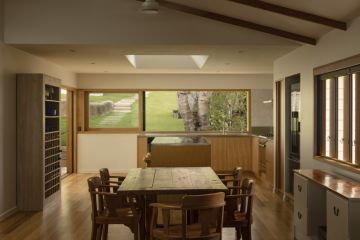Professional home-styling tips and tricks

All you need is modest creative flair and a taste for DIY to update your interior décor and style your home like a professional.
Marj Silva, stylist from homewares and furniture retailer, thehome.com.au, believes anyone can style their home like a professional if they have an eye for design, a refined design plan and commitment. Here are Silva’s tips and to give your home a sophisticated DIY makeover.
Follow tastes not trends
Home design trends come and go but your design tastes are usually more fixed. That’s why Silva recommends DIY stylists begin their project using their personal style as a base.
“It’s pretty rare for you to start with a blank canvas,” says Silva. “People come [to design] their home with things they love, and have collected throughout their travels and life. Starting with your personality is the best way to go.”
Do your homework
Once you know what you like and don’t, start researching what’s actually possible to achieve and available to buy.
Search for interior design examples online or in magazines. Identify similar furniture types, fabrics or ‘themes’ in the styles chosen. The common thread will be your ‘design concept’ that will help you plan your restyle against.
Then, select a colour palette – a range of complementary colours that link to your design concept.
“If you are not a professional stylist, having a colour palette is a very easy way to pull everything together…It will help your room look cohesive.”
If you are designing a room from scratch, your colour palette should be limited only by your design concept and tastes. But, Silva advises, if you aim to mix much-loved furnishings with new items, “look at the objects you’d like to keep and they will give you a lot of clues on where to start”.
Budget
Before you hit the shops, create a restyle budget you can afford. As a general rule, thehome.com.au suggests customers spend 70 per cent of their budget on furniture, and the remainder on soft furnishings and accessories.
“Investing in the bigger items is the smart thing to do.”
Silva recommends investing that bit more on a couch you will keep. But, be more spendthrift with soft furnishings – cushions and vases – which you can easily change to revamp a room.
If you are on a small budget, create an expenditure timeline marking out purchasing milestones along the way. This will ensure you achieve a cohesive look, as desired, but instead of doing it in one hit, you will get there in stages.
Start shopping
Go online or visit retail outlets, markets and local homewares shops. Or, recruit the temporary assistance of a professional stylist to access deals at trade-only furniture suppliers.
Always purchase the most permanent furniture fixtures of your home first: lounge, coffee table, dining setting, bed and bedside tables. Then buy your soft furnishings.
Positioning
Have fun positioning your new purchases but remember to leave adequate space for walkways and traffic-flows, especially in open-living areas.
Every room in every house is different so experiment to see where each piece fits best.
Accessories
The final step in the DIY styling puzzle is to add your accessories – the jewelry of your house – to your perfectly positioned room. Think clocks, candle-holders, frames and vases.
Add your character to the room by dressing it with personal trinkets.
Mix items that match your colour palette with metallic objects of gold, silver and copper.
“Carry all the materials you have collected with you as you shop; have your tape measure with you; always jot things down and keep to that budget!”
Image credit: Dara Tippapart, TheHome.com.au
We thought you might like
States
Capital Cities
Capital Cities - Rentals
Popular Areas
Allhomes
More










